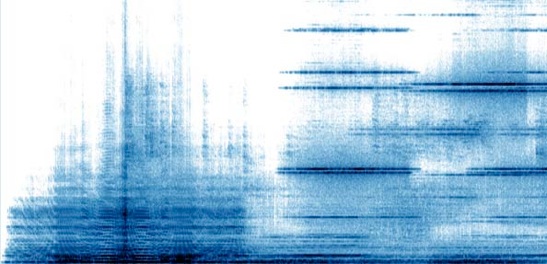Hybris
Jean-Baptiste Barrière, Hybris
computer generated tape piece (1988)
Hybris (from the greek « hybrid », « mixity », but also « loss of all measure ») is a piece on timbral interpolations processes as they are only realizable with computer sound synthesis.
For several years, I have developped a method for building timbral interpolations based on the following structural derivation scheme: modelisation (where the model comes from the analysis of traditional acoustic instruments or arbitrary construction), hybridation (where 2 models or more are mixed together statically), interpolation or transition (where 2 models or more are mixed together dynamically), extrapolation (tranformation preserving the recognition of the reference), and abstraction (transformation alienanting the recognition of the reference); these different steps are realized with an original method of analysis, processing, and synthesis by computer, called « Models of Resonance », that I have developped with Yves Potard and Pierre-François Baisnée at IRCAM. Through this approach, I am trying to set up the foundations of an esthetics of hypermorphosis, a morphogenesis of sonic materials, that could be the ground for genetic mutations inside sound synthesis.
Hybris explores this scheme and this idea inside a timbral space arbitrarily defined, and more specificaly between models derived from doublebass and tamtam sounds. These models have been analysed with computer both for their content in terms of timbre and harmony, then manipulated in the computer aid to composition environment Esquisse (a predecessor of the Patchwork environment), so as to serve as a basis for the construction of the different processes contributing to elaborate the form of the piece.
The piece evolves paradoxically between « program music » and a form of constructivism: it can be perceived as the story of two very rich sonic objects that elaborate together complex relationships, and cross a variety of musical situations, reconsidering permanently limits between the real and the artificial; or as well as the systematic exploration of relations between timbre and harmony.
When composing the piece, I was often thinking to the last chapter of the book by Primo Levi, The Periodic System, in which the writer tries to imagine a novel based only upon the adventures of an atom of carbon, its multiple transformations and becomings. In a similar fashion, I would like to think of Hybris, as a —rather dramatic— story, on the emancipation of two resonances.

